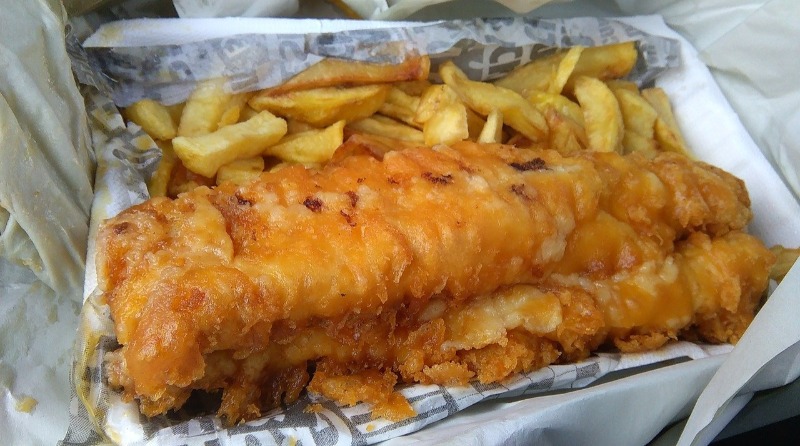When Speed Reading is Necessary and When it Isn’t
As I mentioned in a previous blog post [Speed Reading v Skimming, Normal Slow Reading and Audiobooks] mathematically, speed is defined as distance divided by time. Speed does not necessarily mean fast. Likewise, Speed Reading doesn’t have to be fast. Knowing the techniques of Speed Reading gives you control. You can apply some or all the techniques for going fast or you can deliberately do the opposite to slow down. We talk about Range Reading. You have a varied range of different speeds you can select from. The important thing is that you are deliberately making a choice of how fast you read.

In this blog post I will look at three different applications of reading. Namely, productivity sapping email, procrastination promoting newspapers and pleasurable literature. We’ll explore how your approach can differ according to the way information is presented and your specific goals for reading.

Emails can waste a huge amount of time, especially if you get in the habit of allowing them to interrupt your flow demanding an immediate knee-jerk response. Most email programs have an automatic spam blocking function. Internet service providers can also install mail filters. It is like an arms race between clever marketers, or scammers telling you they have millions of dollars they want you to invest, finding ways to circumvent automated systems. In turn the anti-spam technology is getting more and more sophisticated.
In the EU the GDPR (General Data Protection Regulation) rules stipulate three requirements for sending emails without previous consent.
- Marketers need to have a strong reason to claim that the company the person works for can benefit from what their company offers in the email.
- Secondly, is what’s called ‘fulfillment of information duty’. Recipients should be told what personal data is being processed, for what purpose, and how they can remove their data from a mailing list.
- Thirdly, marketers should not process cold email addressees’ personal data for longer than it’s necessary.
As long as a marketing agency or company abides by these principles it should be easy to unsubscribe to unwanted content.
There are four types of email. Unsolicited spam most of which can be filtered out automatically; Newsletters, ezines, etc which you subscribe to and sometimes give you value but are mostly time wasting. They often don't need to be read and certainly don't need to be replied to; Emails that are non-urgent, demand a response but are not really as important as they purport to be. These would not have serious consequences if ignored; Finally, genuinely important emails that you do need to respond to. This category are a small minority and, as they are important, usually deserve a reasoned response. Set aside specific times each day devoted to answering these important emails. For example: 9am, 12pm and 3pm which generally gives you a maximum three-hour response time. You will be able to focus on one thing at a time without constant interruptions, achieve what you set out to do and have more time.
If you have associates or colleagues who unreasonably expect an immediate response you can setup an automated reply saying something along the lines of, “Thank you for your message. I manage my emails and check at specific times. During normal office hours: Monday to Friday 9am – 5pm you can normally expect a response within 3 hours. If you need to contact me more urgently you can leave a message on my phone at this number *********. Best Wishes”
If I receive an email with a long attachment that I am supposed to review, I will often skim read it initially so that I can respond with my initial impression. If I am required to go into more detail at a later date I can Speed Read in more detail. However, I often find that skimming gave me enough information to serve the purpose without using up too much of my time.
Newspapers

Before you delve into a newspaper decide on what you want to achieve. Skim through looking at headlines and identify which bits you want to Speed Read in depth. You can use a guide such as a pen, pencil or your finger to help with this. Selective reading is an important factor to avoid spending too long on a newspaper. If you come across something of particular interest you can mark it or cut it out to file somewhere later. You could even scan / photograph an article. Of course, online newspapers make it easier to take a ‘screenshot’.
Understand the layout so you can skip bits that are irrelevant. There are usually certain conventions. Page 1 contains one or two main headlines with articles possibly continued on subsequent pages. The back pages are usually sports news. In the main body of the paper you have a few more major news stories, interviews or profiles, columns and opinion pieces and perhaps a news in brief column. There may then be some recreational content like a showbiz column, horoscope, crossword or puzzle page. Now unthinkable, between 1970 and 2015 The Sun, and rival ‘red top’ The Daily Star, published a picture of a topless or scantily clad woman on Page 3. The seventies was certainly a different era with misogynistic, objectification of women seen as mainstream. Thankfully, whilst not eliminated, such attitudes are slowly becoming less socially accepted in public life at least in the UK.
There has always been a certain amount of political bias in the editorial policy of rival papers. In 2017 a YouGov survey (following Theresa May losing her Commons majority) showed that 32% of people said printed publications helped them choose who to vote for but despite this just 7% thought the media was fair and balanced and 4% thought they accurately reported the facts. Try buying a different newspaper than you would usually read to compare and contrast their approach. You won’t necessarily get neutrality or balance but it is interesting to see a variety of different biases. Online news uses algorithms to give you more of what you’ve already shown an interest in. Although comforting, it may be a narrow perspective and doesn’t expose you to other points of view. Don’t take news articles on trust – It is worth fact checking by consulting more than one source.
Newspapers are the ultimate in disposable information. It’s mostly a case of read and recycle. The paper itself can be very useful though, giving it an edge over digital editions.
Fish-and-chip shops traditionally wrapped food in newspaper, or with an inner layer of white paper and an outer layer of newspaper for insulation and to absorb grease. This is a bit before my time but it is said use of newspaper survived as late as the 1980s in some places, before ceasing on grounds of hygiene.

When I was younger I made many plant pots from a few sheets of newspaper formed into a cylinder with a wine bottle. Perfect for germinating runner beans and since the paper quickly degrades no need to un-pot when planting out.
Today I’ve got a log-burning stove. It is essential to have three or four scrunched up balls of newspaper and some thin kindling sticks to light it, so I always keep a little stack of newspapers to hand.
There are countless other uses.
Novels and Literature

You can Speed Read novels with good comprehension and appreciation of overarching themes. In fact, the World Speed Reading Championship always uses a previously unpublished novel as the reading material. Of course, this has to be the case to make sure that comprehension questions are answered based on reading the book, and not from prior knowledge of a subject.
Despite the fact that you can read literature fast, you may choose not to. You might decide to slow down to savour the emotions provoked and skill of the author. Many highly respected books have an allegorical or moral lesson. This may be better appreciated by reading slowly and taking time to think about the deeper meanings. If you are studying literature you need to consider, not just the plot, but also delve into:
- Themes and sub-themes;
- Philosophical perspectives;
- The standpoint or narrator’s point of view;
- Character development and the way in which the author makes characters feel believable and rounded;
- Mood and atmosphere – What emotions are elicited?
- Setting and location – Is a particular city, country or period important?
- Use of imagery, symbolism and metaphor;
- Use of language.
Of course, all these aspects are interrelated and connected to each other. The fine points of literature can be studied and summarised with a Mind Map or series of Mind Maps. Analysis may be extremely complex. James Joyce said he put so many riddles in his works that they would keep professors busy for three centuries. Alternatively, you can just enjoy a thumping good story.
Tony Buzan says, “In the final analysis, speed is often not a main final goal when it comes to literature and poetry – which can best be likened to listening to music or appreciating art… When reading literature and poetry, bring to bear on it all your knowledge and personal judgement, and if you feel it is the kind of writing you wish to treasure forever, forget about speeding through it and reserve it for those occasions when time is not so pressing.”
It is not so much a case of whether speed reading is ‘necessary or not’. It’s more down to what you want to get out of it. Is speed the main consideration (such as in a business or study context) or are you more concerned with taking pleasure in reading?

